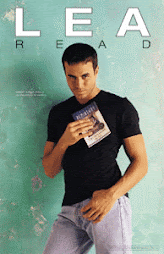The first time I came to Mexico City, I was surprised to learn there was a subway system. Actually, the subway system is easily the fastest way to get around this endless city and my friend who commutes to New York City every day gave it higher marks than the Big Apple´s famous subway. A big plus is it only costs 2 pesos (22 cents) to ride. I take the “limosina naranja,” as my friend calls it, to and from work two days a week. In the neighborhoods at the heart of the city, the subway is firmly underground – a full two long flights of stairs at the nearby station Polanco. At the edges of the city, however, it pops out of the ground, soaring above the graffitied walls and apartment high rises that stretch as far as the eye can see. Even from a viewpoint, Mexico City seems to have no end.
I leave my house at 7:30 a.m., joining the throngs of bustling professionals, street vendors hawking yogurt, gelatin and steaming coffee, and the occasional guitar player. I walk the tree-lined streets of Polanco and descend the gray marble steps into the dim station. When I ride the metro, I truly feel that I live in a city of 20 million. So many feet have padded down these steps that they carry smooth rounded hollows, as though a constant waterfall has dripped its way down over hundreds of years. I step into the flow of people pouring into the station and we line the tracks to wait in the stifling heat of the tunnel. Within minutes, an orange car whooshes up, packed with people. Some push out, some push in, and we’re off again.
A young guy, sometimes really just a boy, unzips his backpack to reveal a speaker and immediately starts blasting us with either ranchera music, the equivalent of America’s twangy country-western, lovesick trovas and boleros, or Spanish versions of American hits ranging from the Beatles to Celine Dion. The burned CDs always cost 10 pesos. Like all the vendors, his pitch is a torrent of familiar words, delivered in a bizarre, high-pitched voice which I’ve learned preserves the vocal chords over a long workday. By the next station, he’s hopped off and another’s hopped on, abruptly changing the soundtrack of our ride.
We pour off the train at Tacubaya, and wind our way to the brown line. The only people talking have cell phones pressed to their ears. Otherwise, there is no noise but the rustling of nylon and polyester and the shuffling of feet. Strains of music wind their way from some other nook or cranny of the station. Parts of the passageways are lined with small booths hawking primarily pizza, donuts and other unhealthy food and “productos naturistas,” just in case you want to pick up a homeopathic remedy for your male-pattern baldness on your morning commute.
One day, the brown line was down so my friend and I had to hop on the lengthier pink line. When we reached Tacubaya, we popped out into a cavern of intricate murals that seemed like a subterranean church. I had never been to this part of the station – I don’t know if I could find my way back again.
I know I’m close to my destination when orange sunlight oozes through the gloom, a sunbeam catching a face here, a purse there as we emerge from the bowels of the metro.









